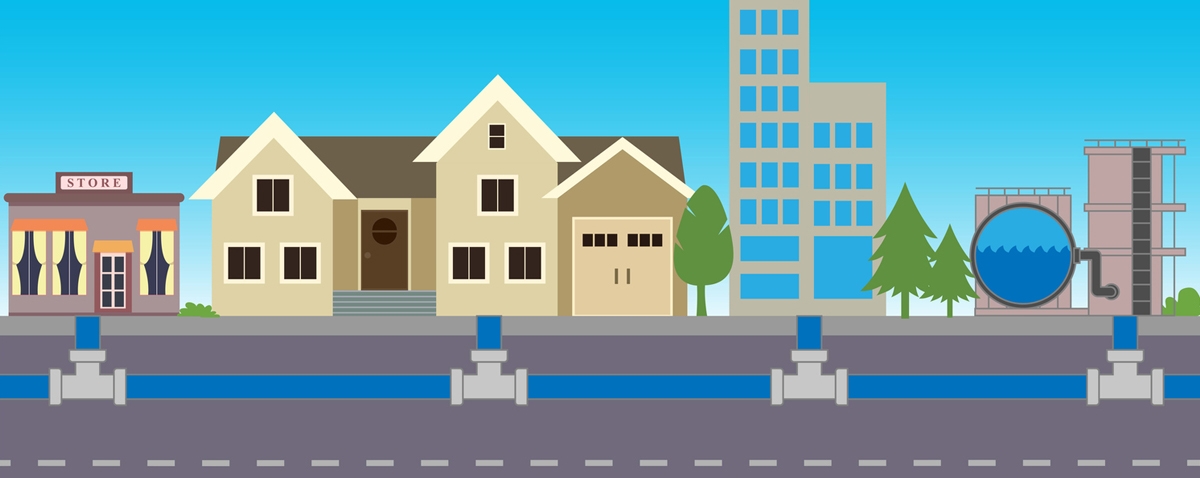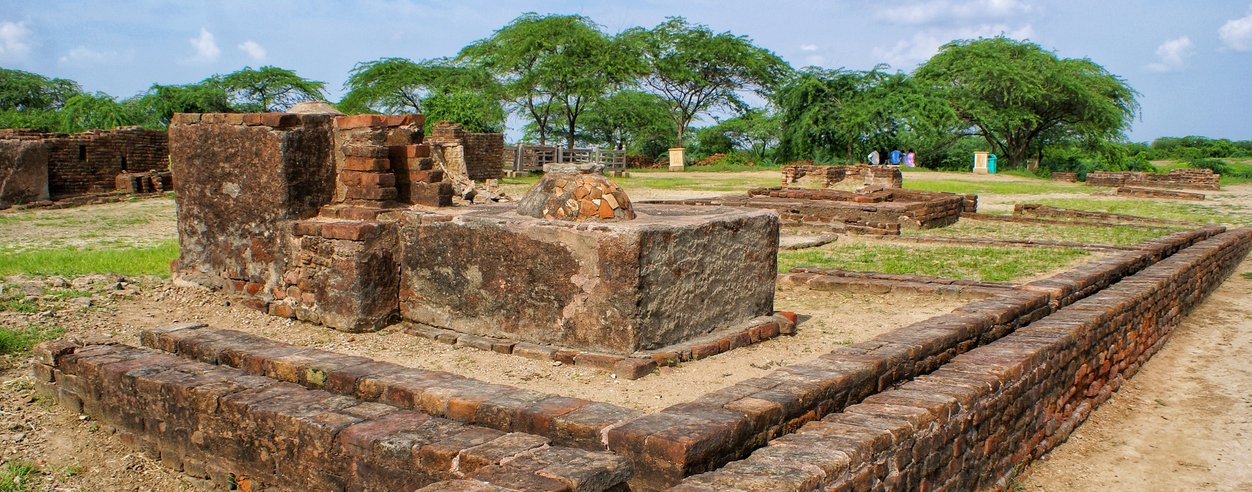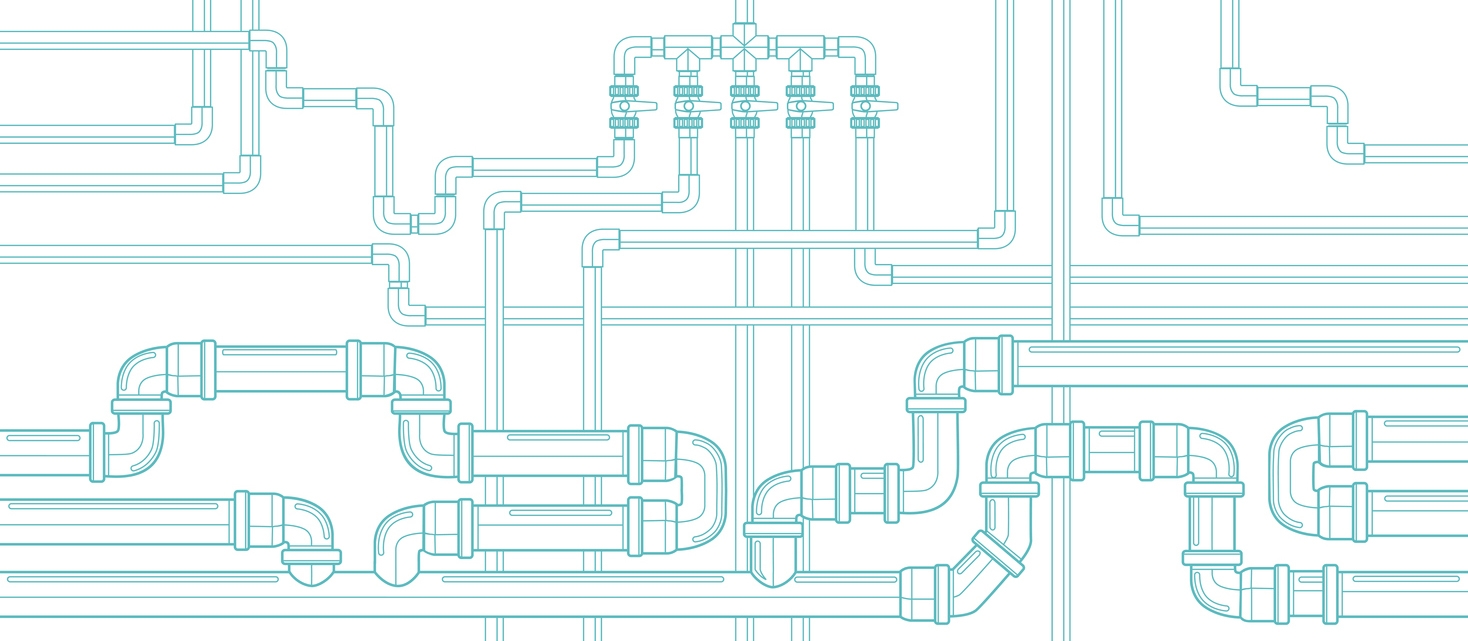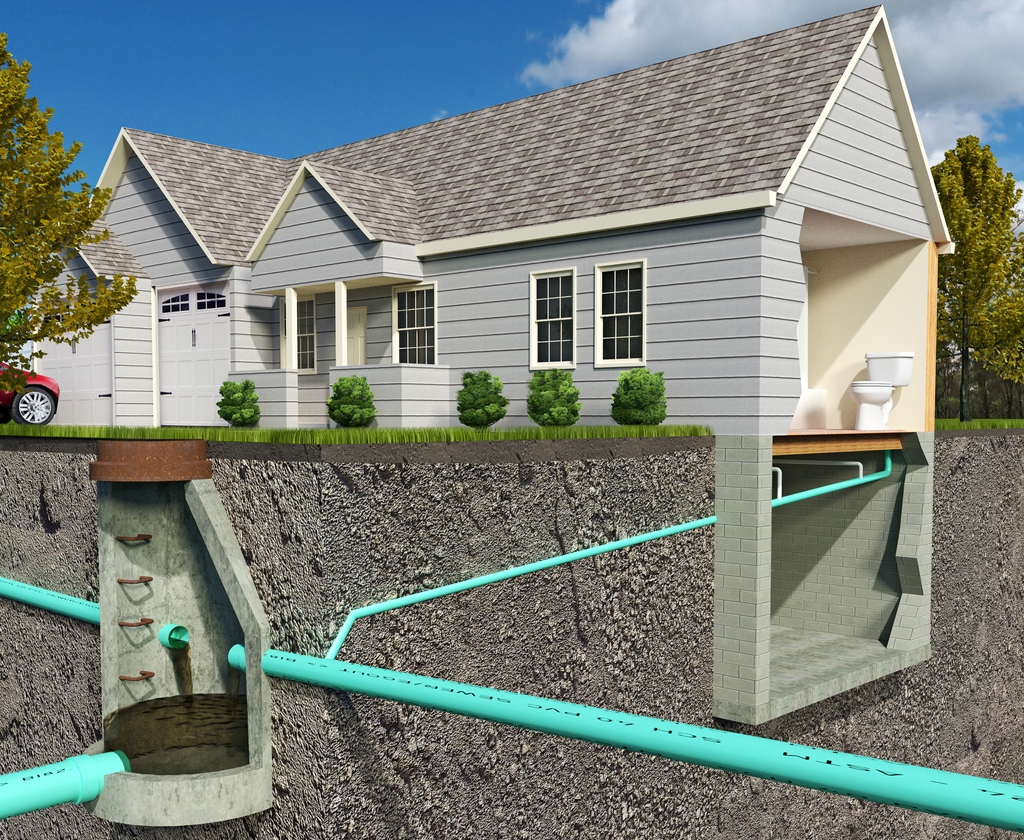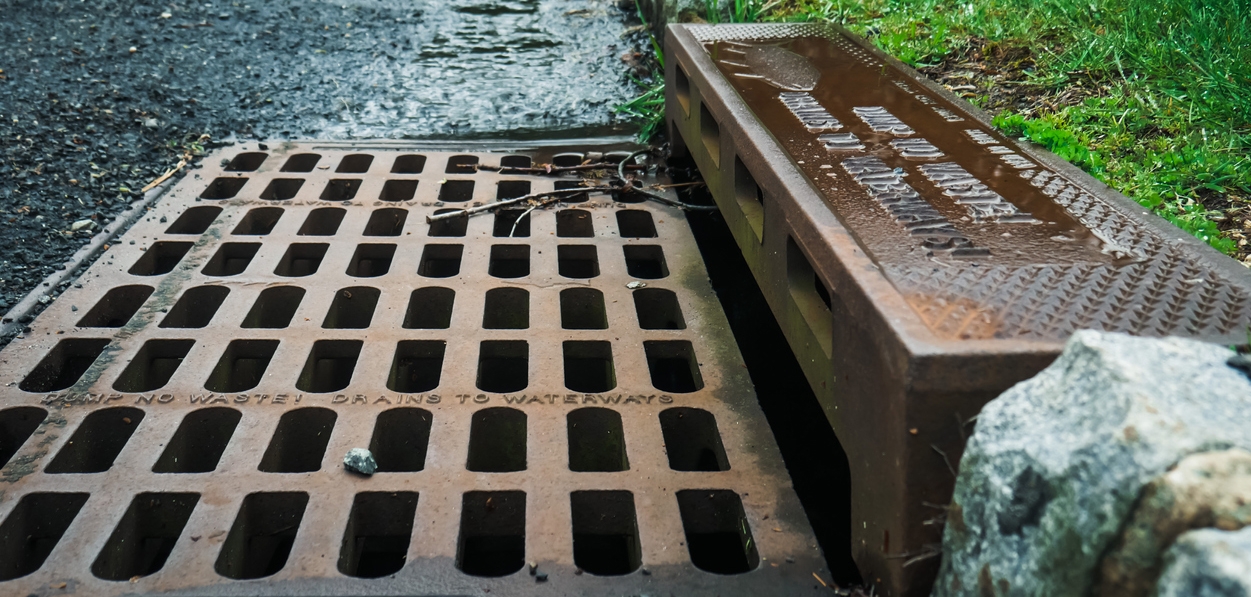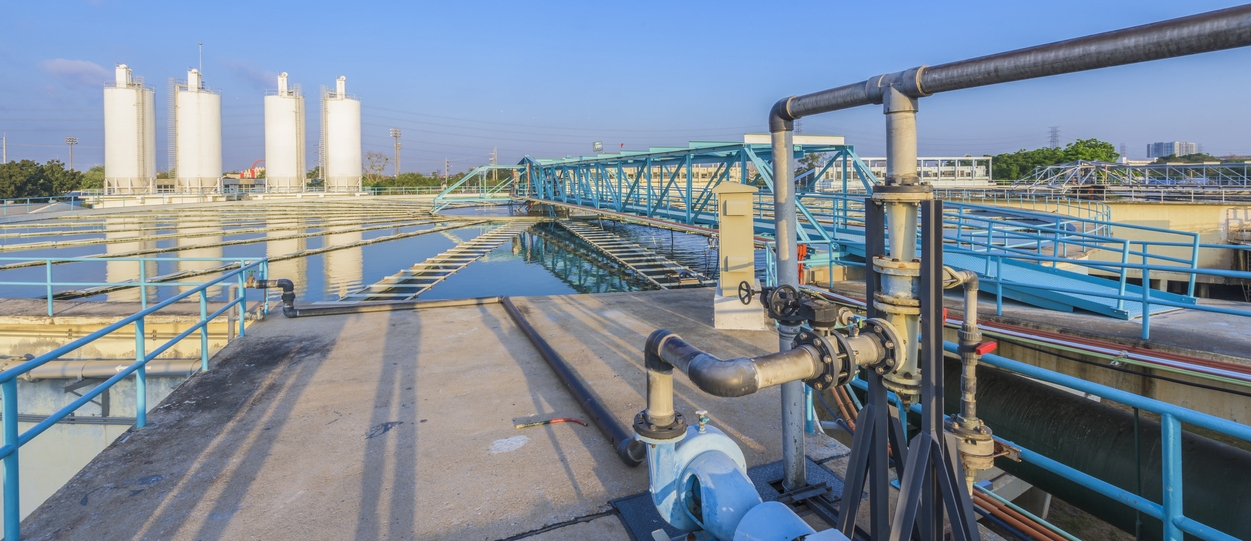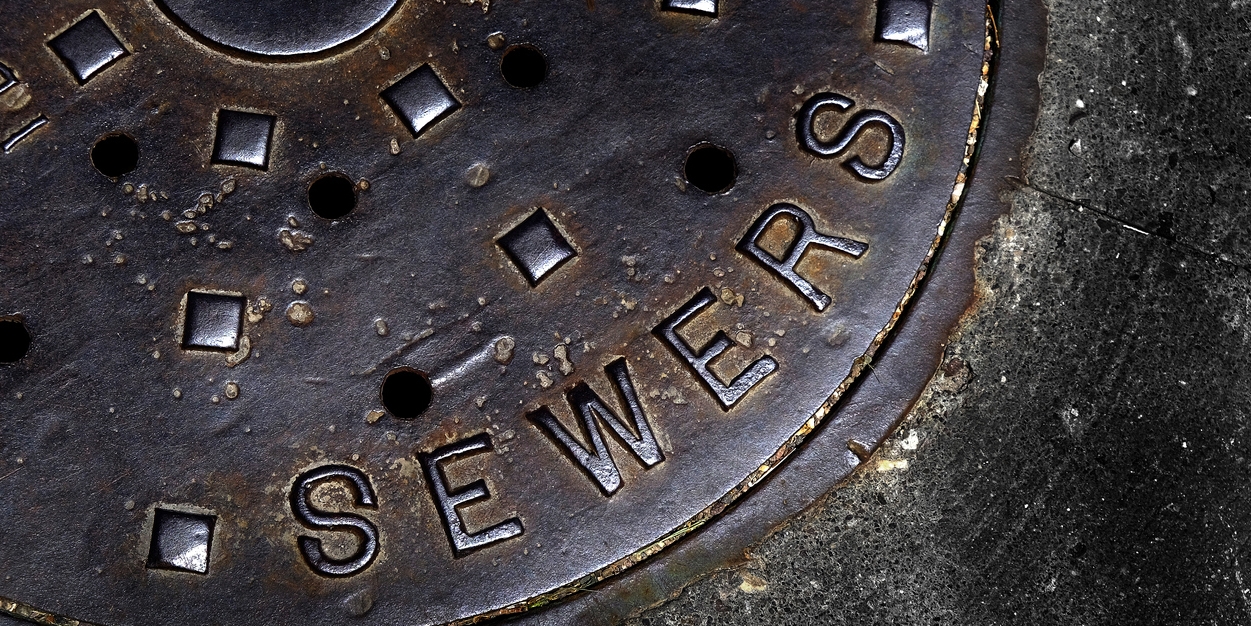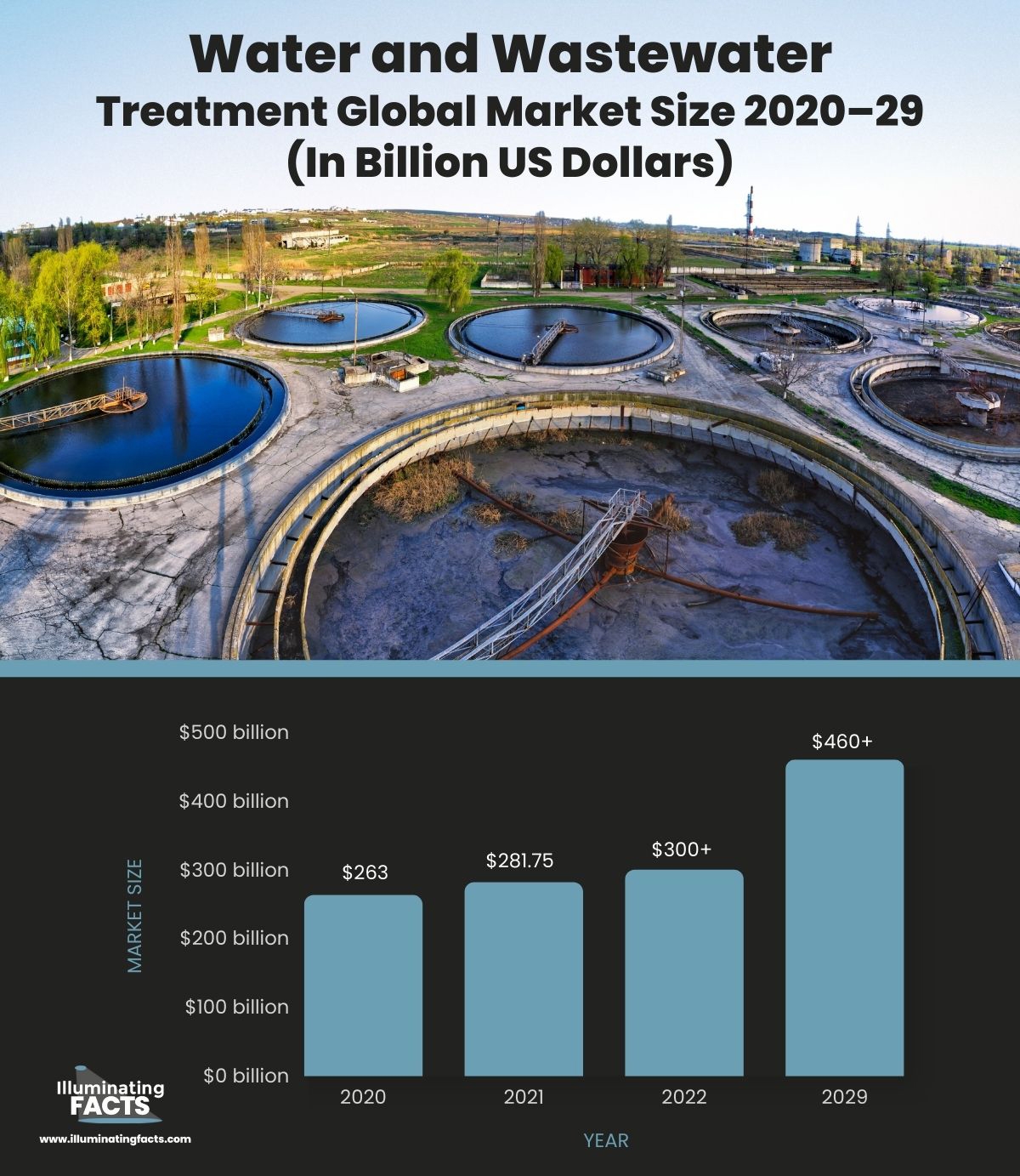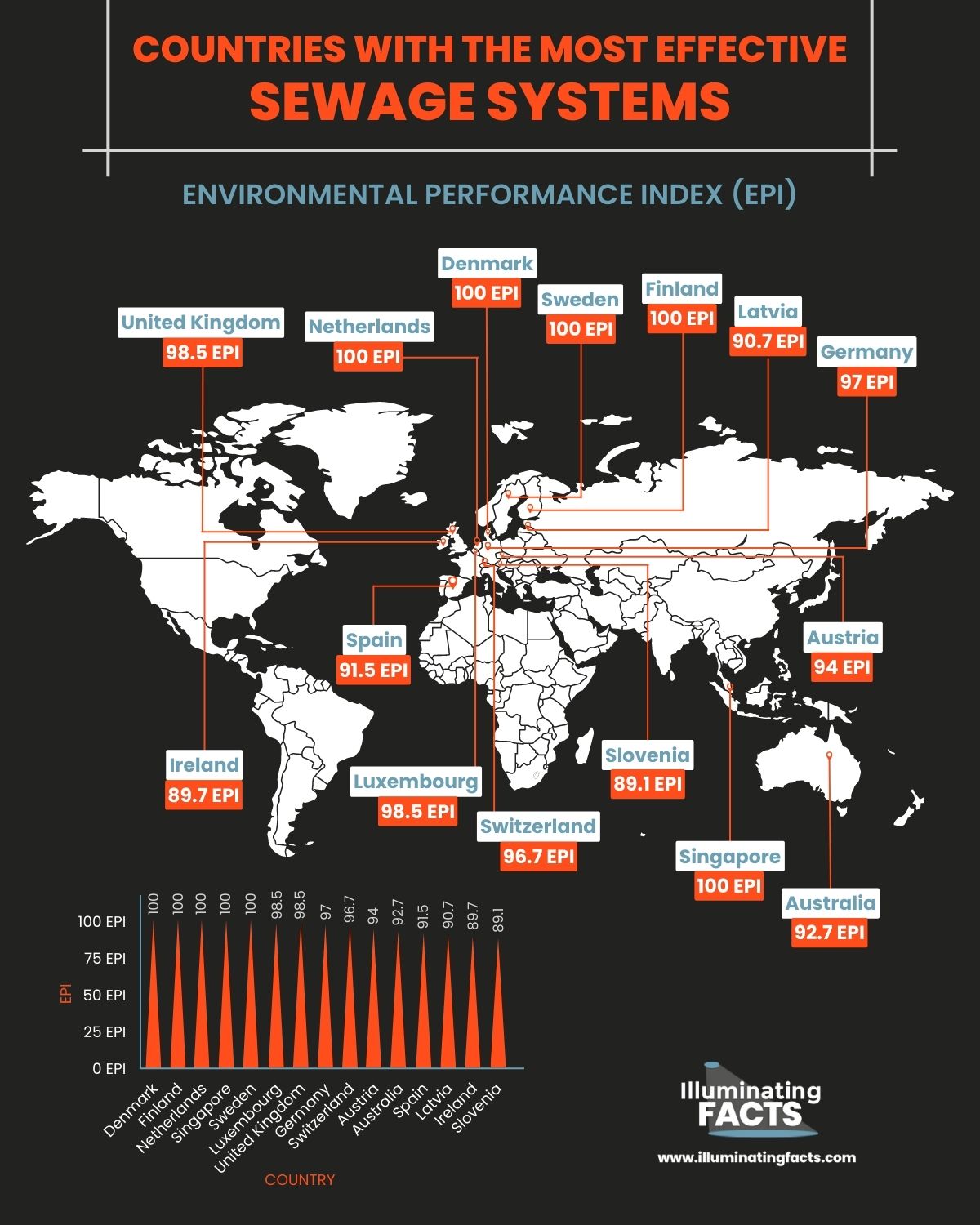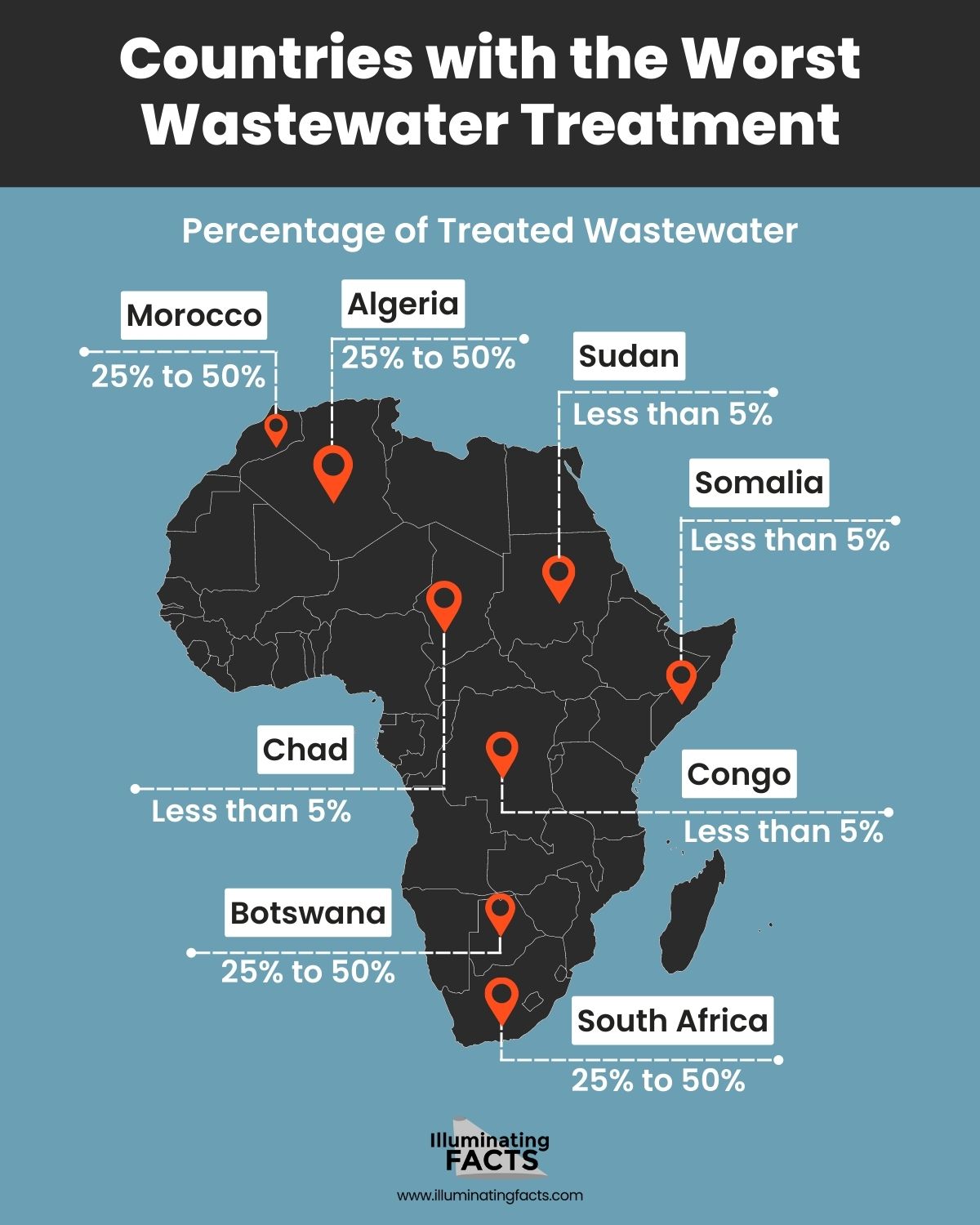The modern sewage system is one of the most important technologies that we have in the current era, as it is responsible for collecting and treating the wastewater that we produce every day. In fact, almost all bathrooms and kitchen sinks are connected to a modern sewage system.
Before the creation of complex sewage systems, humans relied heavily on cesspools and privy vaults, which have chambers that store wastewater underground. These chambers would eventually be emptied and cleaned, but there was no way to clean or treat wastewater back then, so the wastewater was just disposed of in lakes, oceans, and other natural bodies of water.
Wastewater has a negative impact on those bodies of water, as too much waste can make the lakes and oceans inhabitable for wildlife. So, to provide remedies to the problem, people tried to find ways to reduce wastewater and try to treat it in order for it to be reused, and one of the most effective ways they created is the sewage system. The modern sewage systems, which have treatment plants where wastewater is cleaned before it flows back into the environment, collects and treats approximately 34 billion gallons of water every day in the United States alone. [1]
How were we able to create the sewage system for proper wastewater drainage and treatment? And how did it evolve over time? We will find out more as we take a close look at the evolution of the modern sewage system.
Origins of the Sewage System
The modern sewage system has been around since the 19th century, but before that period, there were already wastewater management and sanitation systems that had been implemented by various ancient civilizations, although it is apparent that what they had were primitive and were not as effective as the sewage systems we have today. To know more about those primitive and ancient sewage and sanitation practices and processes, let us take a look at the origins of the sewage system.
Primitive Wastewater System in Skara Brae
One of the earliest wastewater systems created was the two-channel sewers that were found in Skara Brae, a stone-built Neolithic settlement in the Orkney archipelago of Scotland. [2] In addition to the two-channel sewers, archaeologists have also discovered indoor latrines in Skara Brae. These latrines are primitive toilets, and in Skara Brae, the latrines are made of stone.
The Neolithic era, also known as the New Stone Age, started about 12,000 years ago and is the last period of the Stone Age, which began 3.4 million years ago and ended around 4,000 BCE to 2,000 BCE. During the Neolithic era, stone tools and items were still prominent among tribes or civilizations, but the era was also where farming and animal domestication were introduced. Because the human species have transitioned from being hunter-gatherers to settlers, they have done their best to create systems for housing, sanitation, and proper waste management, which are important to make settlements safer and more comfortable to live in.
Early Wastewater Reuse Systems
Because water and sewage systems in ancient times weren’t as complex as the modern sewage system we have today, people during that time had to find ways to use or reuse wastewater that came from latrines or sewers.
The Mesopotamian civilization that prospered in the Bronze Age (from 3200 to 1100 BC) utilized wastewater for irrigation, which is the process wherein people can control the amount of water being poured onto crops or fertile soil. Then, during the time of the Ancient Romans, wastewater was used as fertilizers, which allowed the soils to become more suitable for farming.
Clay Sewer Pipes and Latrines
It was the Mesopotamian civilization (which occupied present-day Iraq) that started the use of clay sewer pipes for wastewater management. It is believed that the Mesopotamians created the first clay sewer pipes around 4000 BCE. In Uruk, an ancient Mesopotamian city near the Euphrates River in Western Asia, latrines that were constructed using clay bricks were discovered by archaeologists. What’s interesting about the clay sewer pipes and latrines that the Mesopotamians built was that they have detachable parts, which makes them easier to clean or unclog if needed. [3]
Underground clay pipes were also found in Crete, the largest island in Greece and home to the Ancient Minoan civilization that started in 3500 BC and ended around 1100 BC. The capital city of the said civilization, Knossos, had a simple yet fairly organized water system that separates wastewater and clean water while also draining out wastewater to avoid flooding. The Minoan civilization was also the first people to use a flush toilet that automatically drains out the wastewater (with the help of hydraulic pressure) through a drainpipe and into the underground sewage pipes.
Lothal’s Private Bathing Platforms
Besides Mesopotamia, another ancient civilization that has found an effective way to move wastewater away from cities and towns is the Indus Valley civilization, which was located in South Asia and was formed around 3300 and ended in 1300 BC. The Indus Valley civilization’s genius when it comes to wastewater management is evident in the city of Lothal, which was located in the far west region of India. [4]
The elite or high-class people of Lothal would have their own private bathing platforms and latrines in the home, while those that belonged to the lower class would share public latrines and bathing platforms, which are generally deep wells scattered in the city.
As to what allows the wastewater to move away from the public and private areas, the ancient people of the Indus valley built underground drains and sewers made of bricks. The private bathing platforms would have smaller drains, which are then connected to a wider public drain and sewage system. Because of the complexity of their wastewater management, the Indus Valley civilization is considered one of the first civilizations to develop an advanced sewage system.
Ancient Rome’s Cloaca Maxima
One of the world’s earliest sewage systems that have a complex design is the Cloaca Maxima, which is built at the center of Rome during the time of the Roman Kingdom (753 BC to 509 BC), the Roman Republic (509 BC to 27 BC), and Roman Empire (27 BC to 395 AD). It is believed that Cloaca Maxima’s initial construction began around 600 BC under the order of Tarquinius Priscus, the then-king of the Roman Kingdom. [5]
The structure was originally built to drain the waters of the marshes near the Roman Form, a rectangular plaza found at the center of Rome, and turn them into a building ground for the creation of a new building or structure. However, the Cloaca Maxima eventually transformed into a sewage system that not only drained the water from the marshes but also removed wastewater in the city.
From an open-air canal, the Cloaca Maxima was continually renovated and improved into a larger sewer system throughout the lifespan of the Roman Empire. By the 1st century CE, the Cloaca Maxima was connected to all eleven aqueducts in Rome. Even after the fall of the Roman Empire in 395 AD, the Cloaca Maxima was still in use, and it even became a tourist attraction starting in the 1800s. Surprisingly, some areas of the sewage system are still intact, and these are still being utilized alongside a much more modern sewage system connected to them.
History of the Modern Sewage System
After the creation of the Cloaca Maxima, the development of sewage systems became more advanced, and by the time of the Industrial Revolution in the 1700s and 1800s, the sewage systems in various parts of the world had become so complex that they could accommodate larger cities. To know more, here is a brief history of the modern sewage system.
The Importance of Hygiene to Islam
For the Islamic people, hygiene is very important, and they even have a set of rules related to “Islamic hygienical jurisprudence,” also known simply as “purity.” In the set of rules, there are specific Islamic toilet hygiene procedures that should be done, and this includes washing your hands with water after using the toilet for the sake of purity. [6]
Because of how important purity and personal hygiene is for Islam, the cities in the medieval Islamic world, known as the Islamic Golden Age (8th century to 14th century), had hydraulic water supply systems that supplied clean water that was safe for drinking and washing. The Abbasid Caliphate, which was an Islamic state that was present from 750 to 1517, had a capital city called Baghdad (now the capital of Iraq) that had about 65,000 baths and a sewage system.
Sanitation and Sewage in Europe
During the Middle Ages, which began in the 5th century and ended in the 15th century, sanitation and sewage systems became stagnant as development and improvement were implemented while the population in Europe and Asia continuously grew. Because of overcrowding and the unhygienic or unsanitary conditions of those regions, they became more susceptible to diseases and plagues. Two of the biggest plagues that struck the said regions were the Plague of Justinian from 541 to 542 and the Black Death from 1347 to 1351.
From then on, several countries in Europe, especially England, did their best to create effective sanitation and sewage systems to reduce diseases caused by the unsanitary conditions of their cities and towns. In Paris, a closed sewer was constructed and designed by a French architect named Hugues Aubriot in 1370. [7] However, the closed sewer was not designed for effective waste management but to close off the smell coming from the wastewater of the city.
In the 14th and 15th centuries, cesspits, cesspools, and outhouses were popular structures used to collect and discard human waste. However, sanitation was still a big problem in the United Kingdom for many centuries, particularly from the 1500s up to the 1900s.
One of the aspects of the United Kingdom that made sanitation very difficult to improve upon in their industrialization, as the country was the first one in the world to industrialize and urbanize. The consequence of industrialization is that sanitation can be more difficult to maintain, despite the many benefits it provides to countries with modern factories and better transportation.
The biggest problem when it comes to sanitation in the United Kingdom was the River Thames, which was getting very dirty and foul in the 19th century. The River Thames also became one of the sources of cholera pandemics and outbreaks throughout the country, and there was even one even called “The Great Stink” in 1858, wherein the River Thames produced a very foul odor that could cause health issues. [8] Because of the problem on the River Thames, the British Parliament had to devise different ways to clean, treat, and sanitize the river.
An English civil engineer named Joseph Bazalgette then designed an underground sewage system that would move the wastewater of the River Thames to the Thames Estuary, the connection of the river to the North Sea. In Bazalgette’s design, there were six main interceptor sewers that were constructed between 1859 and 1865. [9] The interceptor sewers were a massive success, as the River Thames became much cleaner than before, and the pooling of the wastewater in the river was largely prevented. Bazalgette’s design would also influence the modern sewage system for other countries in later decades or years.
Early Sewer Systems in the United States
As the United States went into industrialization like the United Kingdom, the country was actually one of the first ones that successfully implemented a complex sewer system while they were still at the beginning of its industrialization. The first sewer systems in the country were built in Chicago and Brooklyn, two cities found in the northeastern portion of the US, in the late 1850s. [8]
The US also built the first sewage treatment plant that uses chemical precipitation, which is a process that dissolves waste from wastewater in order to make it cleaner. This sewage treatment plant was built in Worcester, a city in Massachusetts, in 1890. Sewage treatment plants would later become more prominent in different countries in the world because of their effectiveness in cleaning or treating wastewater.
Overview of the Modern Sewage System
The modern sewage system, even though it has many complex parts and mechanics, is quite simple in hindsight. Here is an overview of the modern sewage system so that you will be able to see how it works in many countries and cities. [10]
- Wastewater is drained from the pipes installed at buildings and homes to the main sewer pipes. The main sewer pipes would have filters that would separate larger objects from the wastewater.
- Smaller waste materials like sand, dirt, grime, and mud would then settle below the wastewater inside a grit chamber. These smaller waste materials would eventually be collected and used as part of a landfill.
- The remaining wastewater would then move into large tanks, where solid waste that wasn’t filtered on the filter and grit chamber would settle on the bottom. The solid waste on the large tanks would form sludge. [11] The sludge would be moved to a plant where it would be transformed into fertilizer.
- The sewage water, which is already devoid of most of its waste, is transferred to a treatment plant. In the plant, oxygen is added to the water, and this oxygen helps in the growth of microorganisms that eat the leftover waste.
- With 90% of waste removed from the sewage water, it would be filtered and disinfected before it flows into large bodies of water like lakes, ponds, and oceans.
Types of Sewage Systems
There are three different types of sewage systems that are applied or constructed in various cities and countries, and each of these types offers different processes for collecting wastewater. Check out the details below about the three types of sewage systems.
Sanitary Sewer System
The sanitary sewer systems are responsible for moving wastewater from businesses and homes to the main sewer pipes and treatment plants. Sanitary sewer systems can usually be large in size and scope, as they consist of smaller pipes for each home, building, and structure and these smaller pipes are then connected to the main sewer pipes that allow the wastewater to flow through filters, grit chambers, and treatment plants. Once the wastewater is treated, it will directly flow into rivers, lakes, or any nearby bodies of water. [12]
Storm Sewer System
The storm sewer systems are built to collect and drain water from areas that are not connected to sanitary sewer systems, and these areas include roads, streets, gutters, parks, and parking lots. For the mentioned areas, they will have storm drains that are connected to pipes built underground, and those pipes would then let the collected water flow through large bodies of water like rivers and lakes. [12]
Unfortunately, the downside to storm sewer systems is that they are not connected to a treatment plant, and the water they collect would just go straight to nearby lakes, rivers, and ponds. But, most of the water collected in storm sewer systems are relatively cleaner compared to the wastewater collected by sanitary sewer systems, so they require little to no treatment.
Combined Sewer System
As its name already implies, the combined sewer system is a combination of the two sewer systems mentioned above. This combined sewer system has both small pipes for houses and businesses and storm drains for parking lots and other areas that storm sewer systems cover, but the interesting part about this combined system is that the small pipes and storm drains are connected to the main pipes, which is then connected to a treatment plant. [12]
The drawback to the combined sewer system is that it can easily overflow and clog the pipes since it collects waste from two kinds of sources. Once the main pipes overflow and get clogged, the wastewater from the houses and buildings would then flow back into the smaller pipes, or worse, the storm drains.
When the untreated wastewater flows back into the storm drains, it produces a foul smell and would eventually flow into nearby lakes, seas, and rivers and cause damage to the environment. Because of its dangers, the combined sewer system is now rarely utilized in many countries.
Current Status of the Modern Sewage System
Today, the modern sewage system has evolved into a very complex platform that has numerous processes and sanitation procedures. In addition to wastewater treatment, many countries in the world, especially the United States, have done their best to improve water use efficiency in order to reduce the amount of wasted water. The US Environmental Protection Agency have reported in 2002 that from 50 to 70 gallons per person, the amount of water being used by each person in the country per day was reduced to 40 to 60 gallons. [23]
In first-world countries or nations that have a large GDP (gross domestic product), they would have highly-advanced sewer systems and treatment plants that ensure that about 90% of wastewater is treated before flowing into the oceans and lakes. However, smaller countries, developing countries, and cities or areas with low population density would rely on on-site sanitation systems and smaller sewers instead of a proper sewage system.
In the current era, about 52% of wastewater or sewage is treated. But the average percentage of treated wastewater doesn’t actually show the problems of developing countries when it comes to waste management and sanitation. In truth, high-income countries treat 74% of their wastewater, while developing countries only treat 4.2%.
Problems with the Modern Sewage System
There are many reasons why developing countries don’t really treat almost all of their wastewater, and these reasons continue to be problems or issues in regard to how modern sewage systems are built and operated. Here are some of the biggest problems of the modern sewage system in the current era.
High Construction Costs
One of the reasons that developing countries don’t have an effective way to treat wastewater is that they cannot afford to build complex sewage systems and treatment plants. As of 2022, the construction costs for wastewater management structures are still quite high, and there is still no affordable but effective method for cleaning wastewater.
High Maintenance Costs
Once sewage systems and treatment plants are built, maintaining them can also be costly. A lot of pieces of equipment for modern sewage systems are prone to failing, and without proper maintenance, they would eventually suffer from severe damage that prevents them from operating efficiently and effectively.
In sewage treatment plants, the tanks that they use to store wastewater would often have long-term low oxygen concentrations, and this affects the longevity of the tank and the other pieces of equipment connected to it. Moreover, clogging is also a serious issue in sewage treatment plants, as large pieces of solid waste can sometimes stay with the wastewater even after filtering. So, regular maintenance is a must for sewage systems and treatment plants, although not a lot of countries can afford it.
Sludge Leakage
The settling tanks used in treatment plants to remove solid waste (which will form into sludge) on wastewater may sometimes not be efficient enough to remove all sludge from the water that it treats. Under certain conditions, there is a possibility that bubbles will start forming inside the settling tanks, and these bubbles will carry a few flakes of sludge up to the surface. This would then result in a sludge leakage, as the carried sludge would then move alongside treated water inside pipes that flow to the lakes or oceans.
Fortunately, resolving this issue is relatively simple, as long as those who are responsible for maintaining the settling tanks and the treatment plants do their best in inspecting and fixing equipment. Furthermore, the sludge that settles at the bottom of the settling tank should also be regularly removed from the system to prevent leakage. [13]
Environmental Impact of Untreated Wastewater
Sludge leakage and failure to treat wastewater despite having sewage systems can have a negative impact on the environment, particularly on the large bodies of water where the wastewater will flow into. [14] Even if the wastewater is 70% treated, the amount of waste on it would still affect the wildlife that is living within the oceans and lakes.
Despite the advancements that are being implemented in the modern sewage system today, it is still not enough to fully clean wastewater, which is why many agencies and companies are trying to create solutions to reduce the carbon footprint of treatment plants and wastewater management systems.
Statistics about the Modern Sewage System
Wastewater management is a relatively big industry, as almost all countries rely on modern sewage systems to make their cities and towns clean and safe for their residents. To see how big the wastewater sewage industry truly is, we must take a look at several statistics about its market size and its impact on different countries around the world.
Market Size of Wastewater Treatment
The market size of wastewater treatment on a global scale is slowly increasing over the years, but it is expected that it will experience a significant jump in size by 2029. Here is a simple statistic that shows the projected growth of wastewater treatment in terms of global market size. [15]
| Water and Wastewater Treatment Global Market Size 2020 – 2029 (in Billion US Dollars) | |
| Year | Market Size |
| 2020 | $263 billion |
| 2021 | $281.75 billion |
| 2022 | $300 billion+ |
| 2029 | $460 billion+ |
Countries that Use Wastewater Treatment Effectively
There are certain countries that use wastewater treatment effectively, and what we mean by “effectively” is that all or most of their residents or constituents are able to use the sewer system to remove wastewater. According to data published by the Yale University’s Environmental Performance Index or EPI, those who scored 100 on the data are the countries that have 100% of their population connected to a proper sewage system. Here is a list of the ten countries that ranked the highest on EPI’s data. [16]
| Countries with the Most Effective Sewage Systems | |
| Country | EPI Score |
| Denmark | 100 |
| Finland | 100 |
| Netherlands | 100 |
| Singapore | 100 |
| Sweden | 100 |
| Luxembourg | 98.5 |
| United Kingdom | 98.5 |
| Germany | 97 |
| Switzerland | 96.7 |
| Austria | 94 |
| Australia | 92.7 |
| Spain | 91.5 |
| Latvia | 90.7 |
| Ireland | 89.7 |
| Slovenia | 89.1 |
Countries with the Worst Wastewater Treatment
While there are countries that effectively use wastewater treatment for a majority of their residents or locals, there are some that only treat about 5% of their wastewater, and this problem eventually led to them having a shortage of clean water in the areas they occupy. Here is a list that shows the countries with the worst wastewater treatment. [17]
| Countries with the Worst Wastewater Treatment | |
| Country | Percentage of Treated Wastewater |
| Congo | Less than 5% |
| Chad | Less than 5% |
| Somalia | Less than 5% |
| Sudan | Less than 5% |
| Morocco | 25% to 50% |
| Algeria | 25% to 50% |
| Botswana | 25% to 50% |
| South Africa | 25% to 50% |
Interesting Facts about Sewage Systems
- The Stickney Water Reclamation Plant in Cicero, Illinois, is considered the world’s largest wastewater treatment plant. It treats about 1.4 billion gallons of wastewater every day. [18]
- On a global scale, about 44% of household wastewater is not treated.
- Unfortunately, the industries or businesses that rely heavily on organic raw materials for their products create the highest amount of organic pollution in the environment. One of the types of organic pollution they create is industrial wastewater.
- Plenty of industrial wastewater doesn’t really go to sewer systems and treatment plants. Instead, some factories and workshops would dump wastewater directly into the nearby river or lake. The wastewater would then affect the cleanliness or quality of water on the said bodies of water. [19]
- There are more than 3 billion gallons of untreated wastewater that are released from treatment plants per year, which proves that modern sewage systems still need improvement.
- About 62% of residential or indoor water is used for faucets, showers, and toilets.
- Despite the high population density of Singapore, the country is one of the best when it comes to wastewater management, mainly due to its highly advanced treatment plants and well-maintained sewage systems.
- Singapore has found an effective method of reusing wastewater, and this method involves microfiltration, UV radiation, and reverse osmosis. The reused wastewater that the country develops is called “Newater,” which is utilized for cooling towers and other industrial applications. [20]
- It is expected that 600,000 miles of sewage systems in the United States can last for up to 50 years if regularly maintained.
- Industrial water usage, which includes factories, workshops, and chemical plants, occupies 22% of the world’s overall water usage.
- Countries in Europe and North America have businesses or industries that use up to 50% of all water in the world. Moreover, only 12% of the world’s water is used by industries in developing countries. [19]
- There are homes that still use septic tanks, which are wastewater treatment chambers that are used in cities or towns that aren’t connected to a sewage system. Septic tanks are considered to be a type of on-site sewage facility.
- About 19% of homes in the United States use septic tanks. Unfortunately, septic tanks can cause contamination of clean water, so using them is not advisable.
- There are more than 14,700 publicly-owned treatment plants in the United States that collect and treat wastewater for 238 million people.
- The pieces of equipment used for wastewater treatment are said to last for 15 to 20 years.
- A “fatberg” is a mass of waste matter that accumulates inside sewers and can cause clogging. Fatbergs generally consist of non-biodegradable solids like wet wipes or plastic sheets that combine with grease, fat, and oil.
- One of the biggest fatbergs ever discovered was a bus-sized fatberg that was removed from the sewers of London in 2019. The said fatberg weighed about 40,000 kilograms or 88,185 pounds. [21]
- More than 2 billion people in the world don’t have access to wastewater sanitation and treatment.
- The bacteria that consume solid wastes in treatment tanks, bacillus subtilis, is also utilized to treat stomach aches before the invention of antibiotics. [22]
- The modern version of the flush toilet was invented by an English courtier and translator named Sir John Harington in 1586. It is believed that he invented the flush toilet for Queen Elizabeth I, the then-Queen of England.
References
[1] US Environmental Protection Agency. (2022, April 20). The Sources and Solutions: Wastewater. United States Environmental Protection Agency. Retrieved October 5, 2022, from https://www.epa.gov/nutrientpollution/sources-and-solutions-wastewater
[2] Fields, C. Ancient Technology: Sewers?!!! Skara Brae and lots more. CreationScience4Kids. Retrieved September 30, 2022, from https://creationscience4kids.com/ancient-technology-sewers-skara-brae-and-lots-more/
[3] George, A.R. (2015). ON BABYLONIAN LAVATORIES AND SEWERS. JSTOR. Retrieved September 30, 2022, from https://www.jstor.org/stable/26426051
[4] Shukla, D. Lothal: Sanitary drainage at the acropolis. Harappa.com. Retrieved September 30, 2022, from https://www.harappa.com/lothal/14.html
[5] Mohan, K.R. (2017, April 11). Cloaca Maxima – Rome, Italy. Atlas Obscura. Retrieved October 3, 2022, from https://www.atlasobscura.com/places/cloaca-maxima
[6] Aslan, R. (2020, March 16). What Islamic hygienic practices can teach when coronavirus is spreading. The Conversation. Retrieved October 3, 2022, from https://theconversation.com/what-islamic-hygienic-practices-can-teach-when-coronavirus-is-spreading-133221
[7] DeFeo, T. (2015, September 15). This Sewer Museum Stinks, But It’s Worth the Visit. Treatment Plant Operator Magazine. Retrieved October 3, 2022, from https://www.tpomag.com/online_exclusives/2015/09/this_sewer_museum_stinks_but_its_worth_the_visit
[8] Science Trek. Sewage: Facts. Science Trek by Idaho Public Television. Retrieved October 3, 2022, from https://sciencetrek.org/sciencetrek/topics/sewage/facts.cfm
[9] History Extra. (2021, June 28). Joseph Bazalgette: how the man who transformed London paved the way for your loo. History Extra. Retrieved October 3, 2022, from https://www.historyextra.com/period/victorian/joseph-bazalgette-who-london-sewers-work-toilets/
[10] Harris Plumbing. (2017, May 12). HOW DO SEWER SYSTEMS FUNCTION? Harris Plumbing. Retrieved October 4, 2022, from https://harrisplumbing.ca/how-do-sewer-systems-function/
[11] Editors of Encyclopedia Britannica. Learn about primary, secondary, and tertiary wastewater treatment steps and how a Secchi disk tests purity. Encyclopedia Britannica. Retrieved October 4, 2022, from https://www.britannica.com/video/22465/Steps-treatment-wastewater
[12] Balsom, P. (2020, December 21). Understanding the Different Types of Sewage Systems. High Tide Technologies. Retrieved October 4, 2022, from https://htt.io/understanding-the-different-types-of-sewage-systems/
[13] Palguta, M. (2018, August 21). These are the 4 most common problems associated with the sewage treatment plant and its operation. How to deal with them? HydroTech. Retrieved October 4, 2022, from https://www.hydrotech-group.com/blog/toto-su-4-najcastejsie-problemy-spojene-s-cistiarnou-odpadovych-vod-ako-ich-riesit
[14] EnviroTech. (2016, September 27). How Does Sewage Affect the Environment? EnviroTech Online. Retrieved October 4, 2022, from https://www.envirotech-online.com/news/water-wastewater/9/breaking-news/how-does-sewage-affect-the-environment/40472
[15] Tiseo, I. (2022, July 11). Global water and wastewater treatment market size 2021-2029. Statista. Retrieved October 4, 2022, from https://www.statista.com/statistics/1199744/market-size-water-and-wastewater-treatment-global/
[16] Environmental Performance Index. Wastewater treatment. Yale University’s Environmental Performance Index. Retrieved October 4, 2022, from https://epi.yale.edu/epi-results/2020/component/wwt
[17] HydroTech Blog. (2021, August 31). Wastewater treatment across the world: which countries recycle the most and where is the best water quality? HydroTech. Retrieved October 4, 2022, from https://www.hydrotech-group.com/blog/wastewater-treatment-across-the-world-which-countries-recycle-the-most-and-where-is-the-best-water-quality
[18] O’Brien, M. (2018, February 14). Some Fun Facts About Sewers. Beez Neez Plumbing. Retrieved October 4, 2022, from https://bnplumbing.com.au/fun-facts-sewers/
[19] UpKeep. Most interesting statistics and facts about wastewater management. UpKeep. Retrieved October 4, 2022, from https://www.upkeep.com/learning/stats-and-facts-waste-water
[20] Mendret. J. (2019, March 21). Wastewater reuse: which countries are leading the way? University of Montpellier. Retrieved October 4, 2022, from https://www.umontpellier.fr/en/articles/reutilisation-des-eaux-usees-quels-sont-les-pays-les-plus-en-pointe
[21] Bates Environmental. TOP 5 FACTS ABOUT SEWER SYSTEMS THAT WILL BLOW YOUR MIND! Bates Environmental. Retrieved October 4, 2022, from https://www.batesenvironmental.co.uk/blog/top-5-facts-about-sewer-systems-will-blow-your-mind
[22] Trenchless Solutions. (2019, August 27). 5 Unbelievable Sewage Facts. Trenchless Solutions. Retrieved October 4, 2022, from https://trenchlesssolutionsusa.com/5-unbelievable-sewage-facts/
[23] Benefield, A. (2002, May 31). Rule Development Committee Issue Research Report Draft – Residential Flow Rates. Washington State Department of Health. Retrieved October 5, 2022, from https://doh.wa.gov/sites/default/files/legacy/Documents/Pubs//337-103.pdf

